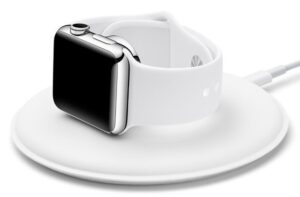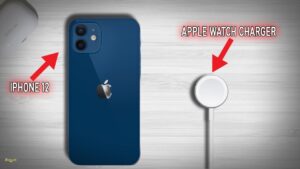Does a Nintendo Switch need batteries? Absolutely! If you’re an avid gamer, you’re probably aware of the importance of having reliable power for your gaming console. The Nintendo Switch is no exception. Whether you’re playing on the go or in the comfort of your own home, having a steady supply of batteries is crucial. In this article, we will explore the different types of batteries that the Nintendo Switch requires and provide some tips on how to maximize their lifespan. So, let’s dive in and find out everything you need to know about powering up your Nintendo Switch!
Does a Nintendo Switch Need Batteries?
The Nintendo Switch is an incredibly popular gaming console that offers a versatile gaming experience for players. One common question that arises among Nintendo Switch owners is whether or not the console requires batteries to operate. In this article, we will explore the topic of whether a Nintendo Switch needs batteries and provide a comprehensive understanding of the console’s power requirements.
The Nintendo Switch Console
Before diving into the battery aspect, let’s first understand the Nintendo Switch console itself. The Nintendo Switch is a hybrid gaming console, designed to be used both as a handheld device and as a traditional home console. It features a tablet-like screen with detachable Joy-Con controllers that can be used together or separately, depending on the gaming mode.
Powering the Nintendo Switch
The Nintendo Switch can be powered in two ways: through an internal battery or by connecting it to a power source via a power adapter.
Internal Battery
The Nintendo Switch comes equipped with an internal battery, allowing players to use the console in handheld mode without the need for a direct power source. The battery life can vary depending on factors such as screen brightness, usage of wireless functions, and the intensity of the gameplay. On average, the Nintendo Switch can last between 2.5 to 6.5 hours on a single charge.
Charging the Battery
To charge the internal battery, the Nintendo Switch comes with a USB-C port located at the bottom of the console. It can be connected to the provided dock or directly to a power adapter. When connected to a power source, the battery will charge, and players can continue using the console even while it’s charging.
Power Adapter
While the internal battery provides portability, the Nintendo Switch can also be powered by connecting it to a power source using the provided power adapter. This option is useful when playing in docked mode, where the console is connected to a TV for a more immersive gaming experience. When connected to a power source, the Nintendo Switch does not rely on the internal battery, allowing players to enjoy uninterrupted gaming sessions.
Joy-Con Controllers and Batteries
Now that we have covered the Nintendo Switch’s power options let’s explore whether the Joy-Con controllers, which are an integral part of the console, require batteries.
Joy-Con Controllers
The Joy-Con controllers, included with the Nintendo Switch, are versatile and multifunctional. They can be attached to the console in handheld mode, used independently as two separate controllers, or shared with a friend for multiplayer gaming. Despite their small size, these controllers are packed with features such as motion sensors, HD rumble, and NFC capabilities.
Power Source for Joy-Con Controllers
Unlike other gaming console controllers that rely on replaceable or rechargeable batteries, the Joy-Con controllers have their own built-in batteries. These batteries are conveniently charged when the controllers are attached to the Nintendo Switch console in handheld mode or using the Joy-Con charging grip, which is sold separately.
Battery Life of Joy-Con Controllers
When fully charged, the Joy-Con controllers have an impressive battery life, which can last up to 20 hours, depending on the usage. This ensures that players can enjoy extended gaming sessions without worrying about the controllers running out of power.
Maximizing Battery Life
While the Nintendo Switch offers both an internal battery and built-in batteries for the Joy-Con controllers, it’s essential to understand how to maximize the battery life for extended gaming sessions.
Optimize Display Settings
Adjusting the screen brightness to an optimal level can significantly help conserve battery life. Lowering the brightness can help extend the overall playtime, especially when playing games that do not require vibrant colors.
Limit Wireless Functions
Certain features such as wireless connectivity, motion controls, and HD rumble can consume more battery power. If you are playing a game that doesn’t rely heavily on these features, consider disabling them to lengthen the battery life.
Power-Saving Mode
The Nintendo Switch offers a power-saving mode that can be activated to conserve battery power. When enabled, this mode reduces the screen brightness and limits some system functionalities, helping to extend the battery life.
Proper Charging Habits
To ensure optimal battery performance and longevity, it is important to follow some best practices when charging the Nintendo Switch and its Joy-Con controllers:
- Use the provided power adapter and cable to charge the console and controllers.
- Avoid using third-party chargers or cables, as they may not provide the necessary power or could potentially damage the device.
- If possible, avoid charging the Nintendo Switch in extreme temperatures, as it can negatively impact battery performance.
- Do not overcharge the console or the Joy-Con controllers. Unplugging them once fully charged can help prevent any damage caused by excessive charging.
In conclusion, the Nintendo Switch relies on batteries for its operation. The console itself is powered by an internal battery, allowing for portable gameplay, while the Joy-Con controllers have their own built-in batteries. Understanding the power options and following best practices for charging can help ensure an enjoyable gaming experience with the Nintendo Switch. Whether you’re playing on the go or in docked mode, the Nintendo Switch provides the flexibility and convenience required by today’s gamers.
Thank you for reading this comprehensive guide on whether a Nintendo Switch needs batteries. We hope this article has provided you with all the information you needed. Happy gaming!
Frequently Asked Questions
Does a Nintendo Switch Require Batteries?
Yes, the Nintendo Switch requires batteries to function. It is powered by a built-in rechargeable battery.
What type of batteries does the Nintendo Switch use?
The Nintendo Switch uses a lithium-ion battery, which is included with the console when purchased.
Can the batteries be replaced?
While the batteries in the Nintendo Switch are not user-replaceable, they are designed to last for a long time. If you experience any issues with the battery, it is recommended to contact Nintendo’s customer support for assistance.
How long does the battery last?
The battery life of the Nintendo Switch can vary depending on usage. On average, it can last between 2.5 to 6.5 hours when fully charged. The battery life can be extended by adjusting settings such as screen brightness and disabling certain features.
How do I charge the Nintendo Switch?
To charge the Nintendo Switch, simply connect the included AC adapter to the console and plug it into a functioning power outlet. You can also charge it by placing it in the docking station when the console is in TV mode.
Can I play the Nintendo Switch while it is charging?
Yes, you can continue playing the Nintendo Switch while it is charging. The console will charge its battery while connected to a power source, allowing you to enjoy uninterrupted gameplay.
Final Thoughts
In conclusion, the Nintendo Switch does require batteries for operation. This portable gaming console relies on a combination of rechargeable batteries within its main unit and replaceable batteries in its controllers. Battery life can vary depending on usage, with average playtimes ranging from 2.5 to 9 hours. It is important for Nintendo Switch users to have spare batteries on hand, especially when gaming on the go or during extended play sessions. So, if you’re wondering, “Does a Nintendo Switch need batteries?” the answer is yes, and it’s essential to ensure an uninterrupted gaming experience.



